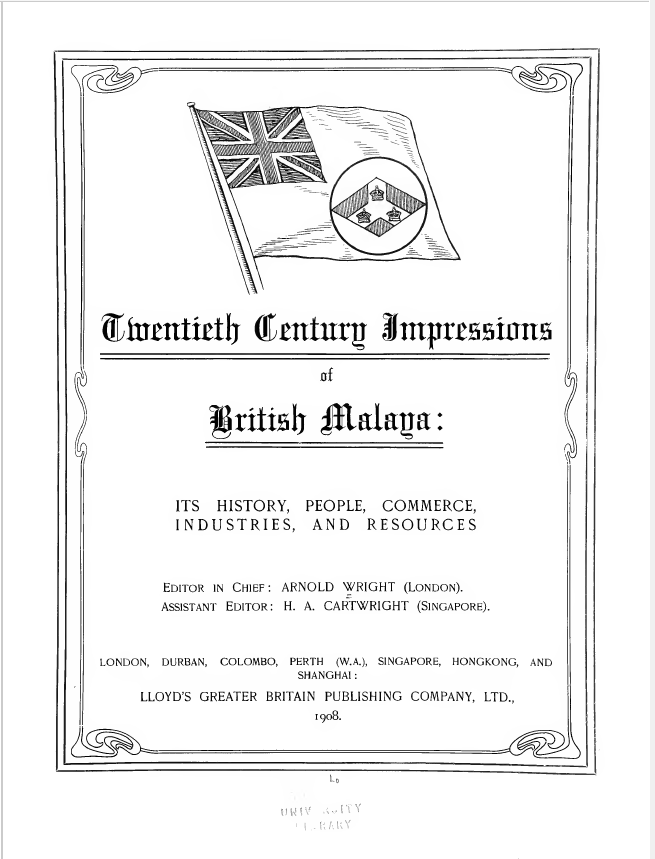
Click Link Below for the full PDF Article
>>>>>>> 20th Century Impressions of British Malaya <<<<<<<
News Feature on Channel News Asia <here>

If we are meeting for the first time, my name is Khairi Johari, better known as Pak JoFe, The Keris Collector from Singapore, your personal guide to the exciting world of the keris and its collecting culture.
If you are a fan of history, art, and mythology, embodied into these traditional daggers, that we natives of the Malay World refer to as the keris, be sure to subscribe and join our community right here on The Keris Collector YouTube Channel.
By
Web Admin
on
“KĔRIS” MEASUREMENTS FROM NORTH BORNEO
Author(s): H. G. KEITH
Source: Journal of the Malayan Branch of the Royal Asiatic Society, Vol. 16, No. 1 (130) (July, 1938), pp. 134-136
Published by: Malaysian Branch of the Royal Asiatic Society
Click Link Below for the full PDF Article
>>>>>>> KERIS MEASUREMENTS <<<<<<<
By
Web Admin
on
Click the link below for the full PDF Article:
>>>>>>> What Is Intangible Cultural Heritage? <<<<<<<
By
Web Admin
on
Author(s): Prince John Loewenstein
Source: Journal of the Malayan Branch of the Royal Asiatic Society, Vol. 26, No. 1 (161)
(July, 1953), pp. 37-42
Published by: Malaysian Branch of the Royal Asiatic Society
Click the link below for the full PDF Article:
>>>>>>> “Tulang Mawas” Re-examined <<<<<<<
By
Web Admin
on
Author(s): H. G. Quaritch Wales
Source: Journal of the Malaysian Branch of the Royal Asiatic Society, Vol. 47, No. 1 (225)
(1974), pp. 110-111
Published by: Malaysian Branch of the Royal Asiatic Society
Click the link below for the full PDF Article:
>>>>>>> THE ORIGIN OF THE ‘TULANG MAWAS’ <<<<<<<
By
Web Admin
on
IDENTIFYING KERIS PARTS
1. INTRODUCTION
In any discussions related to Nusantara (Malay Archipelago), seldom can one shy away from discussing the subject of the keris – the single hand, double edged, asymmetrical; bladed weapon of the indigenous inhabitants of the region.
This weapon type, whose origin remains a mystery till this day, can only be uniquely found in abundance throughout the regions of Nusantara and strangely nowhere else in the world.
The keris, saturated myths, legends and traditions of indigenous coastal communities of Nusantara, centuries long before the arrival of the first European colonialist. Eventually, through European colonisers, they brought the lore and specimens of the keris out of Nusantara and introduced it to the world.
The mysticism and metaphorical divinity associated with the keris continues to fascinate the minds of collectors and aficionados alike to this day.
However, before delving further on the intricacies and technicalities related to the art, science and myth of the keris, let us first familiarise ourselves with the keris. What is a keris?
2. WHAT IS A KERIS?
Depending on the choice of reference literature available on this subject; kris (European), criss (Portuguese), crees (German), keris (Malay), karis (Aceh); all refers to the same thing. For the sake of consistency in reference, I shall be using the term “keris” throughout my writings.
A keris, according to Woolley (1947), is “a double-edged dagger or rapier varying in shape and size, primarily for thrusting; it’s essential characteristic is the widening of the blade towards the hilt to form a guard, long and pointed on one side, short and blunt on the other.”
To a certain extent, this is somewhat close to describing what a keris is, however upon closer observation and study, Woolley’s notes is but a generalisation without going into detailed specifics. Key specifics are the crux that makes the art of the keris, more fascinating to study today.
A keris from an astute observation is defined as a seamless blend and synergy between artisans. The keris is a composite artistic combination of beautifully created parts and components. Which by themselves are fascinating works of art but cannot be defined singularly as a keris.
Only in combination does each of these components then merge as one and becomes the apropos keris.
3. THE KERIS
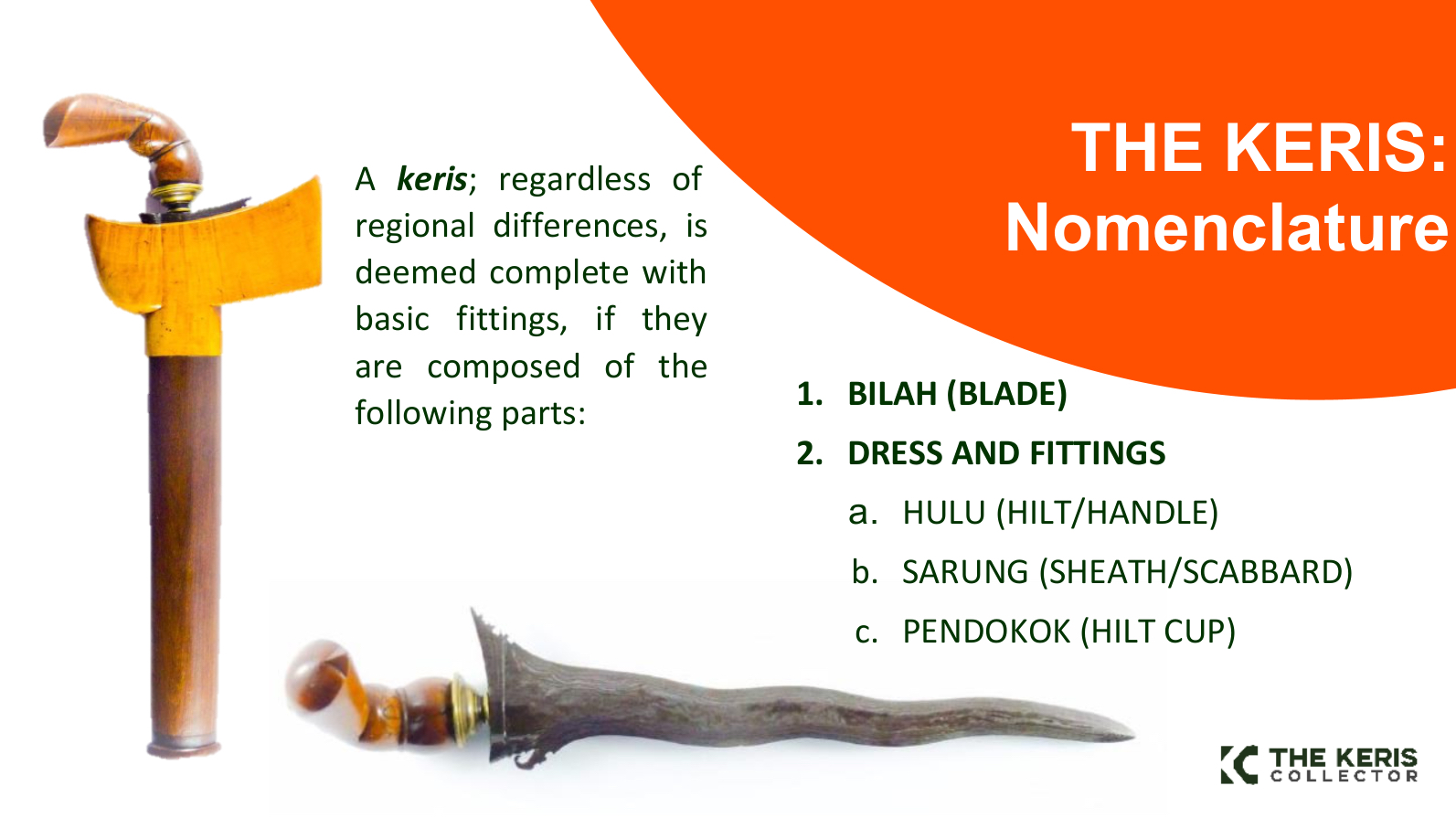
3.1 KERIS DRESS AND FITTINGS
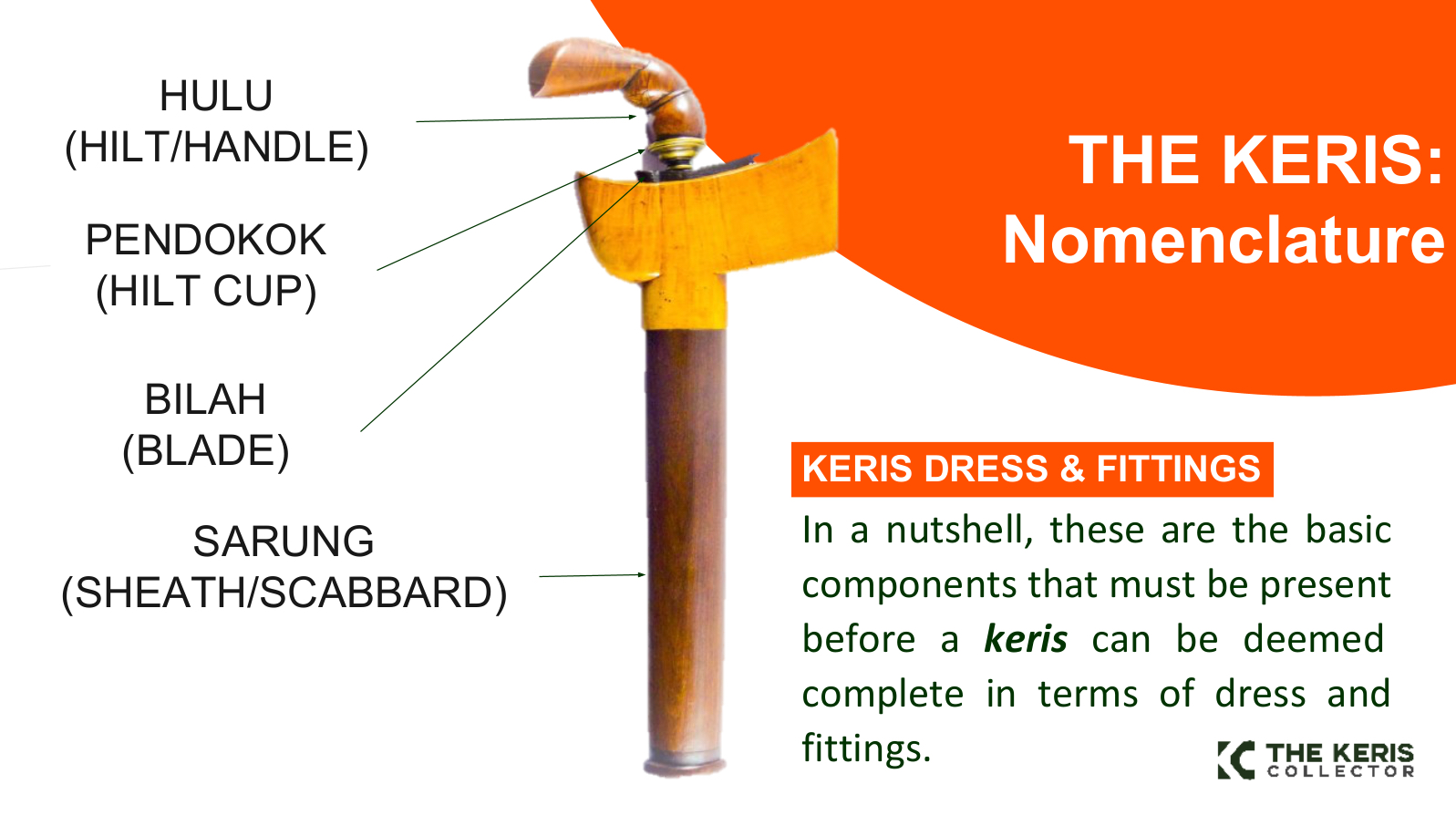
3.2 KERIS SARUNG (SHEATH/SCABBARD)
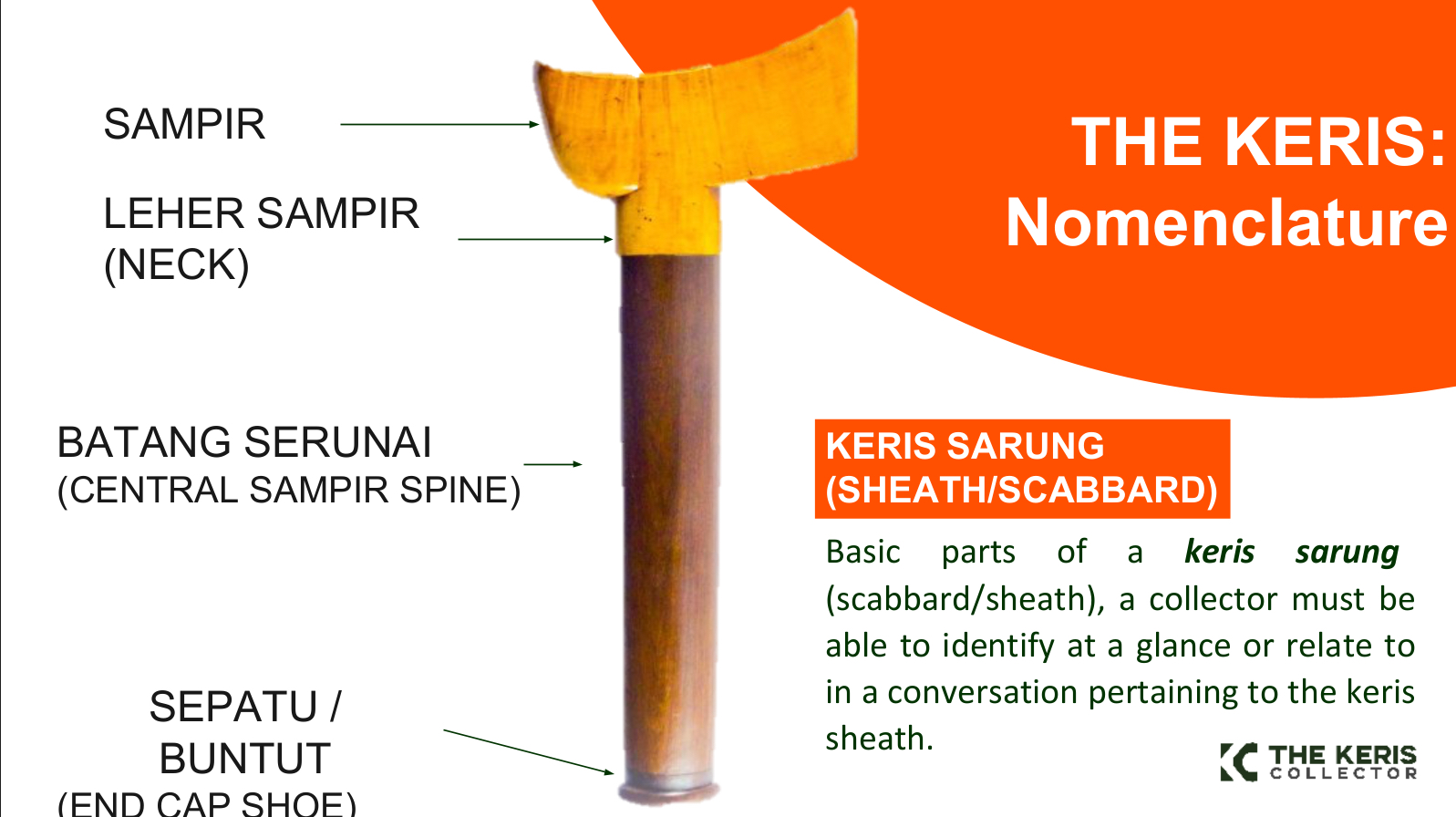
3.3 KERIS HULU (HILT/HANDLE)
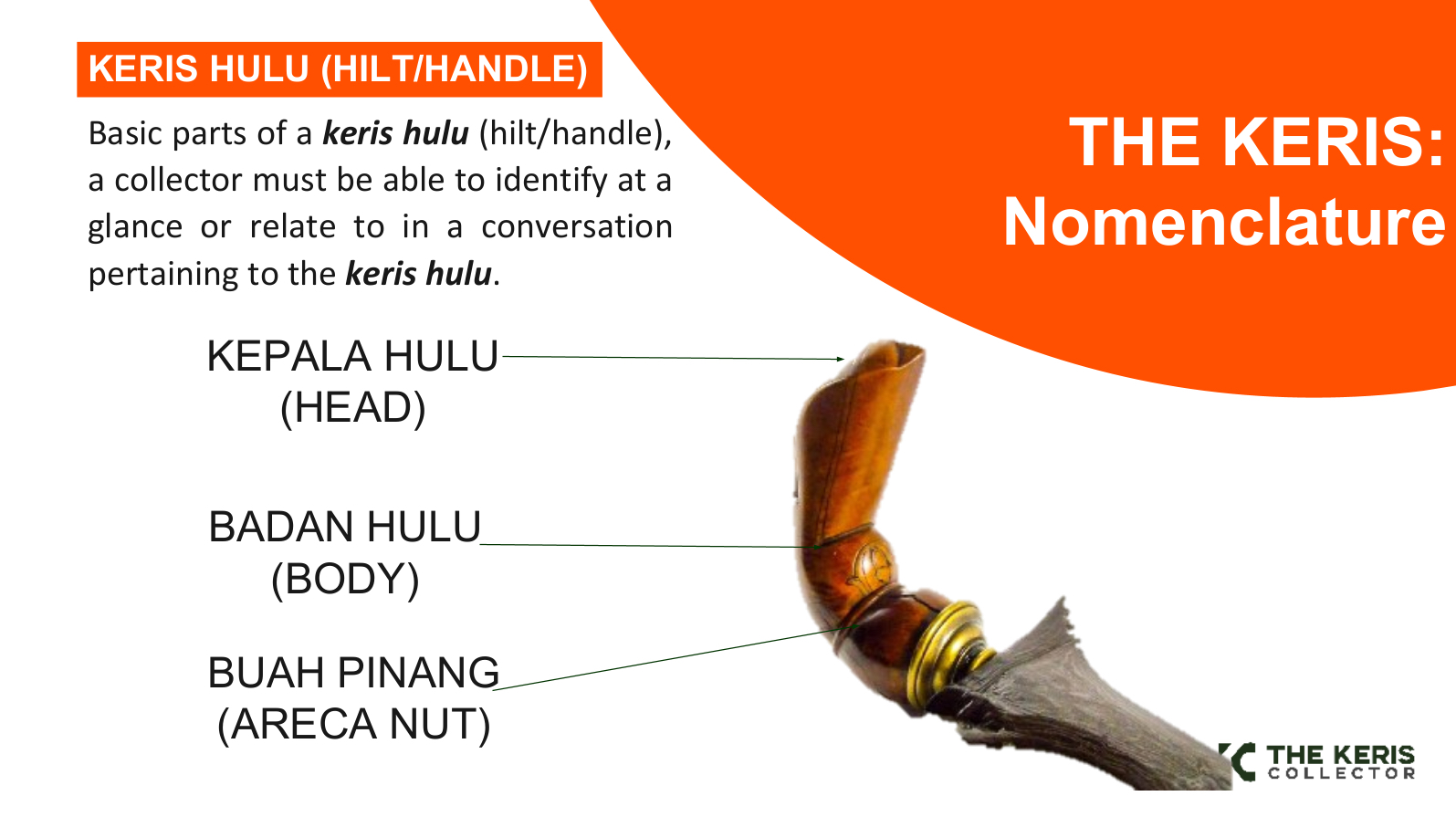
3.4 KERIS BILAH (BLADE)
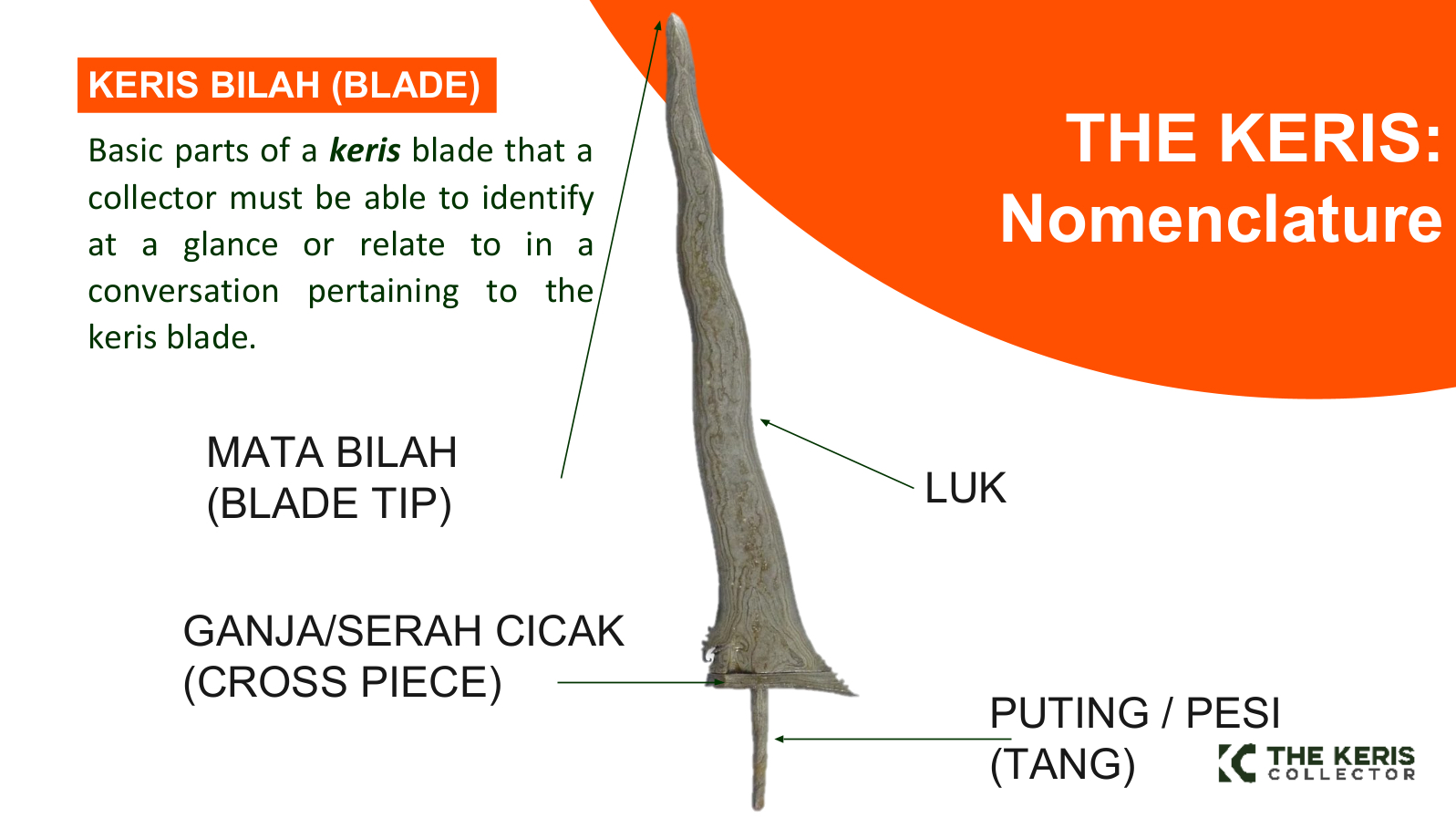
3.5 KERIS DAPUR/PERABOTS/BANGUNAN
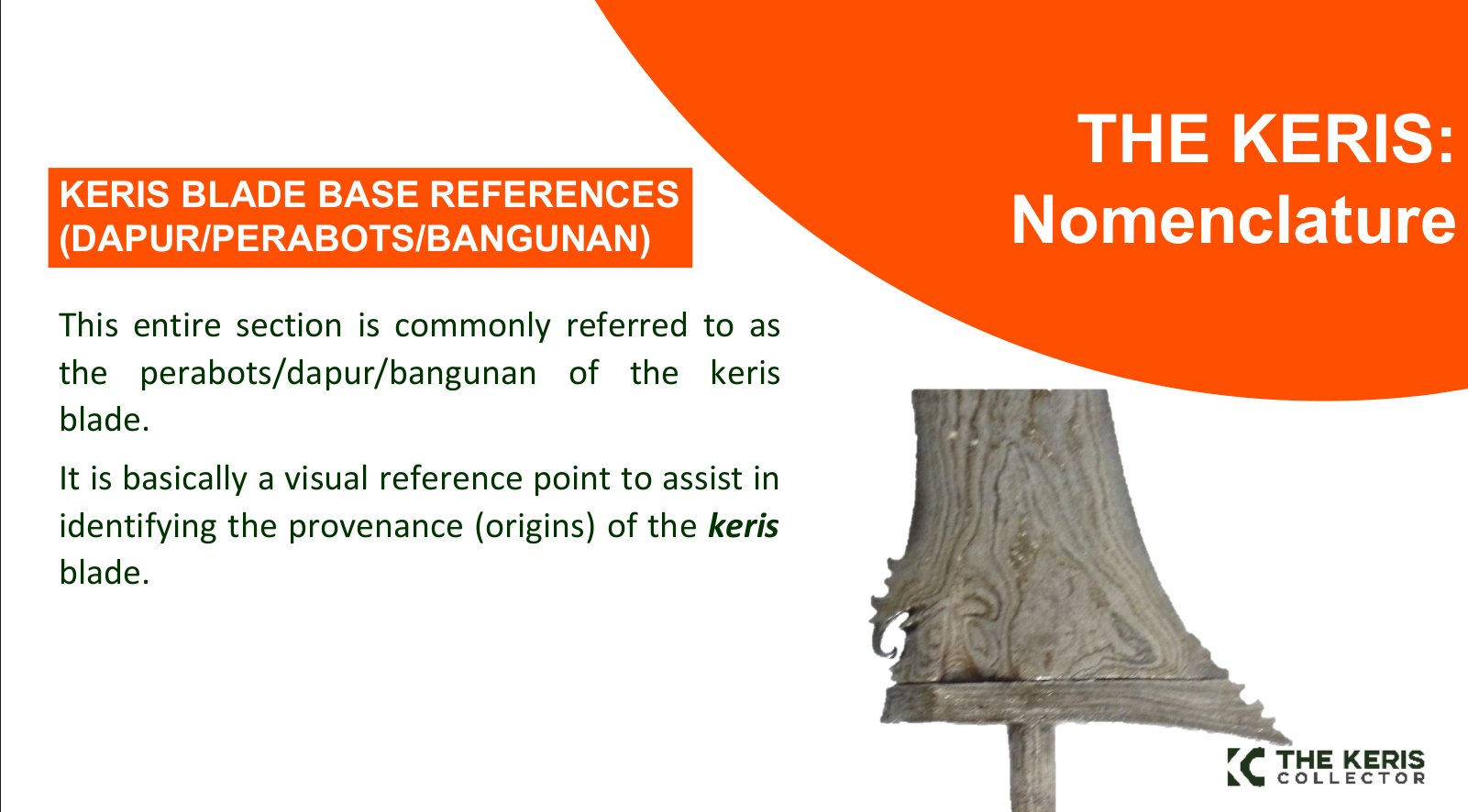
3.6 COUNTING LUKS: METHOD 1
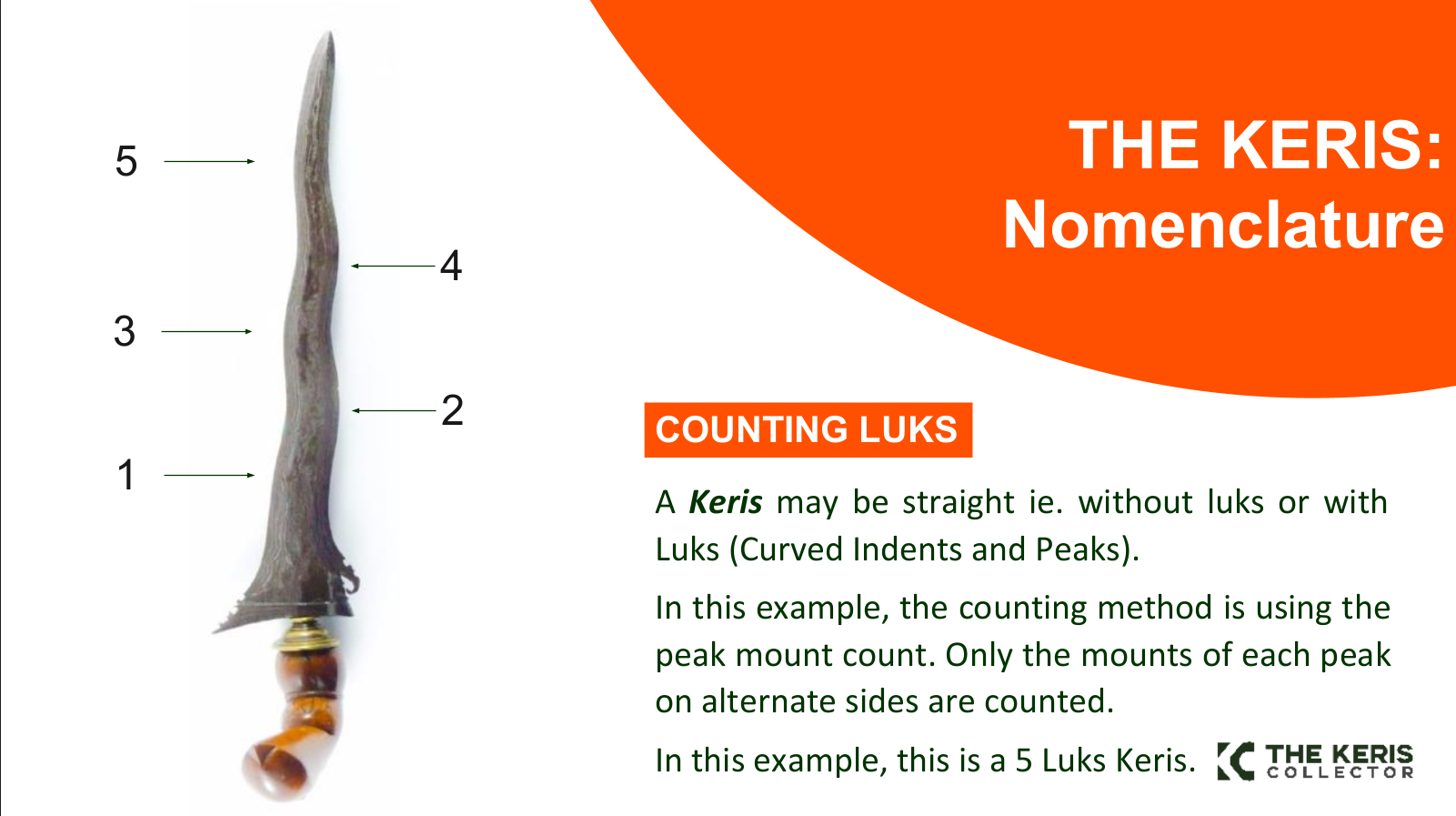
3.7 COUNTING LUKS: METHOD 2
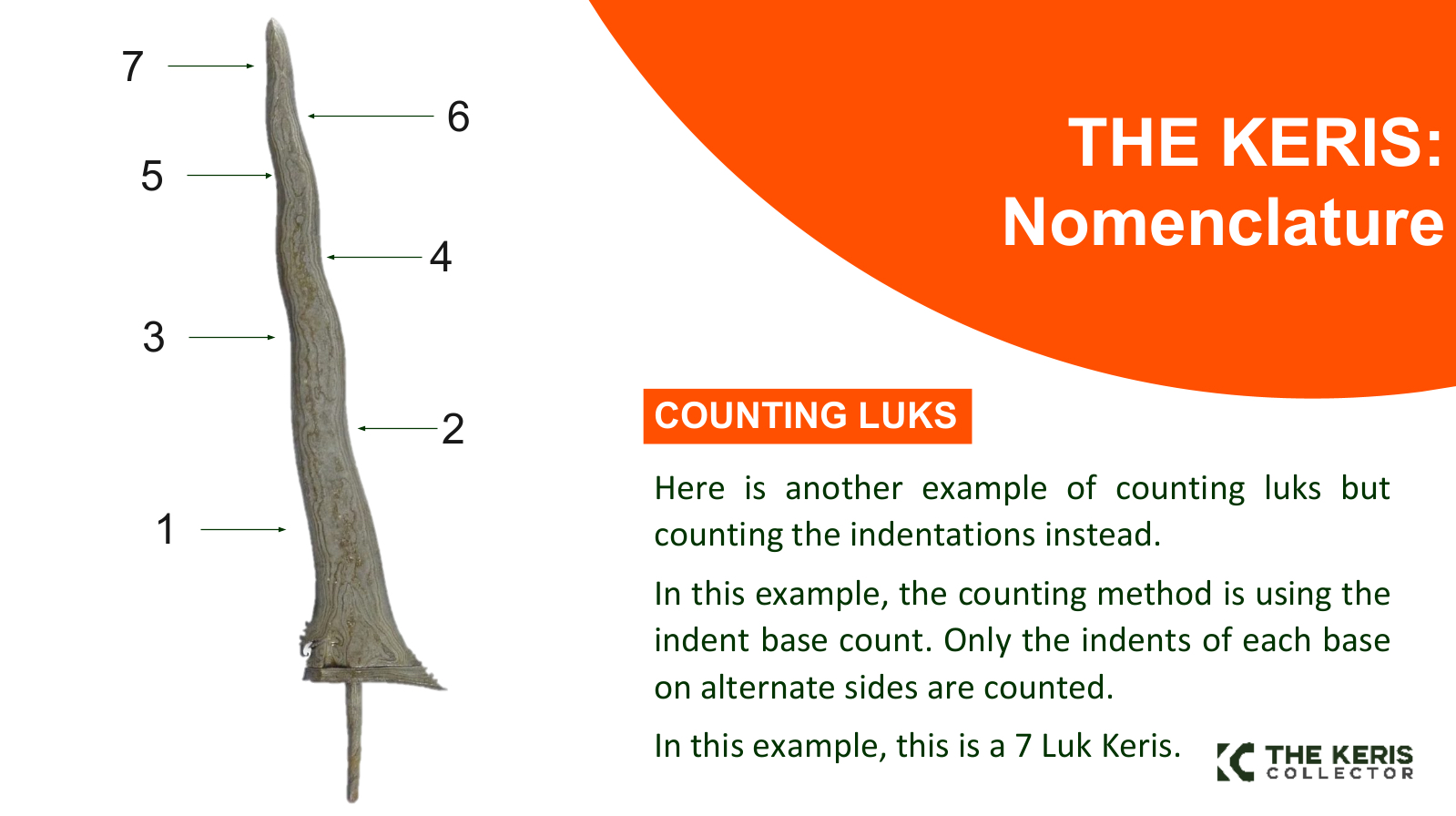
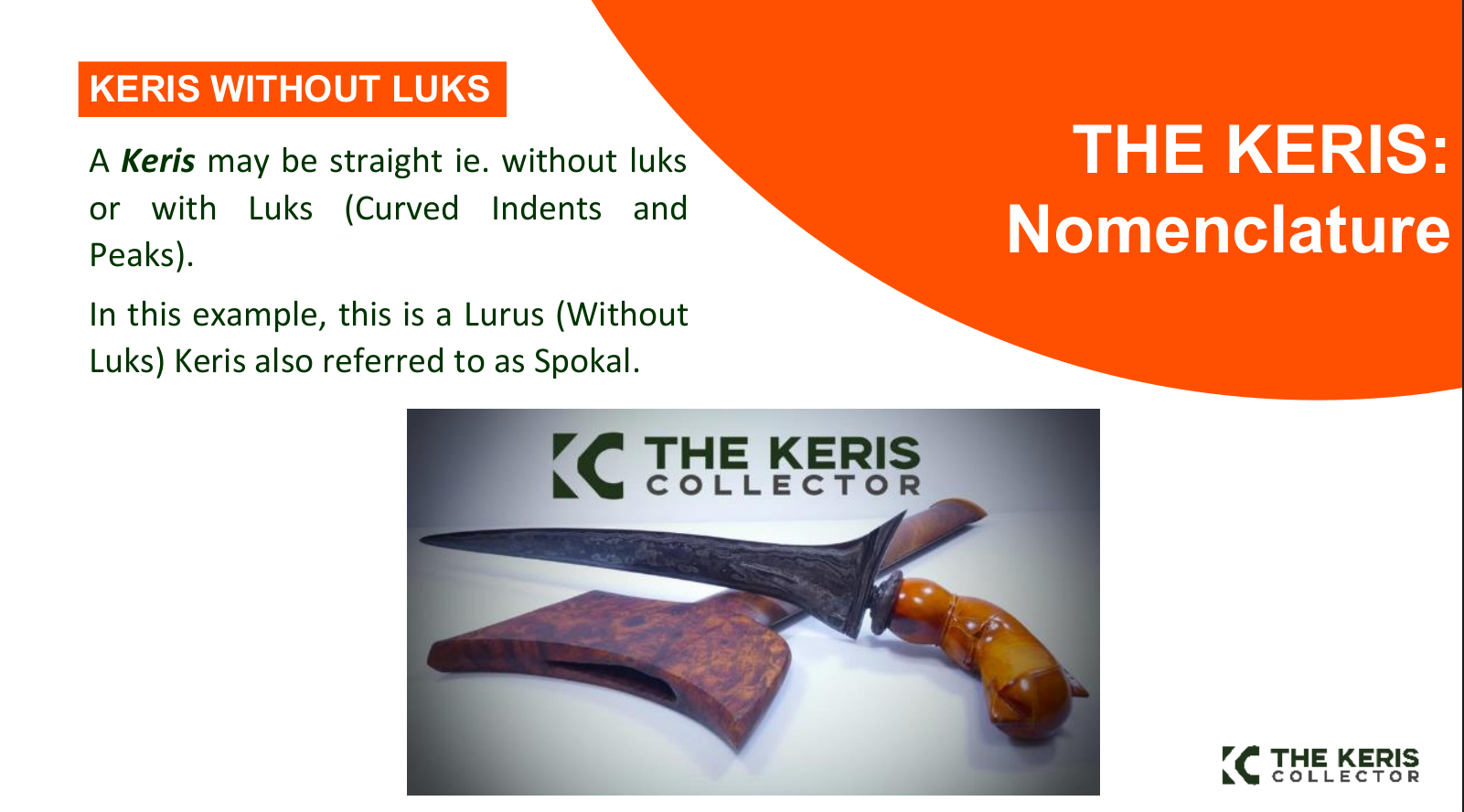
4. CONCLUSION
The study of the keris form and art is diverse and transverse across regions within the Malay Archipelago (Nusantara), there are various styles and forms adopted; some exclusively specific to some regions. However the basic structure of a keris; how it is made and built; remains consistent throughout its history.
Before you embark on a journey to discover more, it is crucial that you ensure your basic footing on the subject is firm and solid. It would be pointless and a waste if your basic understanding is astray from the beginning.
In summary, a keris, is technically defined as an asymmetrical thrusting and slashing double edged bladed weapon, designed as an underarm tool of attack, whose blade broadens at the base and tapers towards its tip. The keris comprises of several key components, without which none can function without the other on its own. The keris is unique only to the indigenous inhabitants of the region of the Malay Archipelago.
The hilt, the blade, the sheath and the hilt cup serves a rudimentary purpose to the proper function and usage of the keris as a weapon and a tool for communication. These aspects will be discussed further in future write-ups.
On this note, I hope my brief introduction to this subject, be of benefit to you. In this write up, I introduced the basics of the keris, presented as an object. I will elaborate more on future write-ups. Till then, enjoy this reference material and please share it so that others out there may benefit from my writing too. Cheers.
5. REFERENCES

By
Web Admin
on
Review
Reviewed Work(s): The Javanese kris by Isaäc Groneman and David van Duuren
Review by: DICK VAN DER MEIJ
Source: Bijdragen tot de Taal-, Land- en Volkenkunde, Vol. 166, No. 2/3 (2010), pp. 342-345
Published by: Brill
Click the link below for the full PDF Article:
>>>>>>> The Javanese kris by Isaäc Groneman and David van Duuren – A Review <<<<<<<
By
Web Admin
on
The Origin of Indonesian “Pamor”
Author(s): J. P. Frankel
Source: Technology and Culture, Vol. 4, No. 1 (Winter, 1963), pp. 14-21
Published by: The Johns Hopkins University Press and the Society for the History of Technology
Click the link below for the full PDF Article:
>>>>>>> THE ORIGIN OF INDONESIAN PAMOR <<<<<<<
By
Web Admin
on
THE KĔRIS SULOK OR SUNDANG
Author(s): E. BANKS
Source: Journal of the Malayan Branch of the Royal Asiatic Society, Vol. 18, No. 2 (137) (August,
1940), pp. 105-107
Click the link below for the full PDF Article:
>>>>>>> THE KERIS SULOK OR SUNDANG <<<<<<<
By
Web Admin
on
THE BIMANESE KRIS: AESTHETICS AND SOCIAL VALUE
Author(s): MICHAEL HITCHCOCK
Source: Bijdragen tot de Taal-, Land- en Volkenkunde, Deel 143, 1ste Afl.,
ANTHROPOLOGICA XXIX (1987), pp. 125-140
Published by: Brill
Click the link below for the full PDF Article:
>>>>>>> THE BIMANESE KRIS: AESTHETICS AND SOCIAL VALUE <<<<<<<
